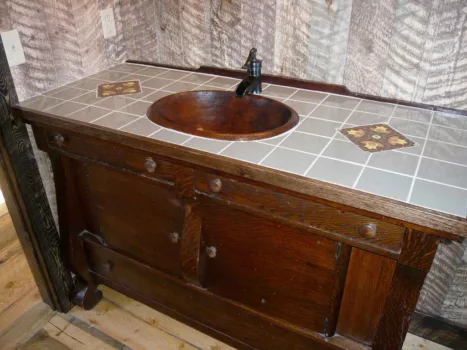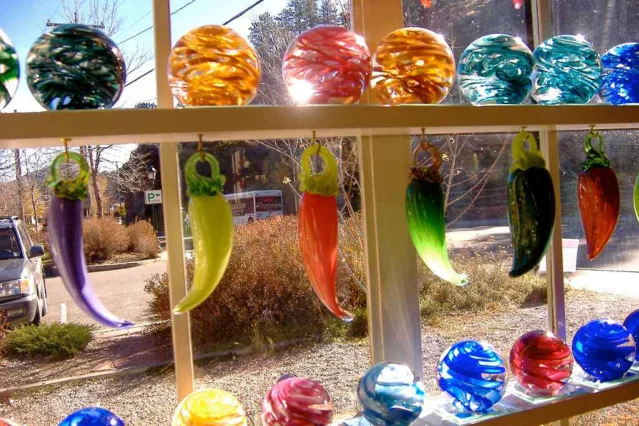
Copper has been around since… well the Copper Ages. Around 4,000 BC, during the Eneolithic period, man first began making metal tools. Since those early times, uses for copper has continued to grow.
In the realm of household plumbing, copper pipe is highly desirable. For one, it doesn’t react to water. Also, rust and corrosion are not an issue.
At room temperatures, exposure to oxygen creates a very slow chemical reaction leaving a brown/black deposit of copper oxide over the surface. Outdoor exposure will slowly allow a layer of copper carbonate to build up giving copper that nice mellow green layer.
In both cases, this isn’t corrosion but rather a protective layer called patina. When it comes to antiques and other copper products like sinks and plumbing fixtures, patina is something that we try hard not to disturb or diminish.
In fact, here are formulas for adding patina to copper surfaces.
One thing’s for sure, copper sinks have become very popular in households these days.
Here’s what to look for and how to care for a copper sink…
Why A Copper Sink?

Today’s homes are all about the upgrades like granite countertops, stainless appliances, natural tile floors, and custom cabinetry.
With this level of investment, the addition of a copper sink just makes good sense. Think of it as an investment that will pay off immediately in terms of your own enjoyment. And it will only get better over time, since copper actually ages quite nicely!
The whole point of a copper sink is the timeless appearance of handcrafted quality.
Since the metal is so malleable, it can be formed by machine, by hand, or cast into elaborate designs. Unlike cast iron, it won’t shatter. And since there’s no porcelain finish, chips and cracks are basically impossible.
You could even drop a heavy cooking pot into a copper sink and the worst that would happen is a new scratch that, over time, will just add more character to your sink!
Types Of Copper Sinks
Both stylish and extremely durable, copper sinks come in many designs for both the kitchen and the bathroom. You might even choose a copper sink for your bar.
Here are some of the most popular options when it comes to copper sink:
Of course, the copper farm sink and copper apron sink are probably the most popular type of copper sink in today’s log homes.
As far as designs go, all copper sinks have the appearance of timeless and handcrafted workmanship. Two of the most common designs are:
Mexican copper sinks come in many forms: cast, hand-hammered, or engraved.
Artisan copper sinks will add a classic old world look to your home. Without a doubt, a copper sink adds warm and welcoming tones that will impress everyone who crosses your threshold.
How To Care For A Copper Sink
Caring for a copper sink is more about what you don’t want to do than what you should do.
The use of chemical or citrus-based cleaning agents or abrasive scrubbing pads will destroy the patina and take away from the natural beauty of the copper material.
Acidic foods such as oranges, tomatoes, and lemons — if left sitting in a copper sink — will dissolve the patina leaving a bright and shiny “new penny” spot on your sink.
Even minerals in hard water can work on the patina spoiling that old and well-aged appearance of copper.
If the patina does develop shiny spots or scratches, luckily the cure is very simple. Do nothing! That’s right, over time the patina will regenerate and the original appearance will return.
You could also repair the patina surface with a repair kit:
RELATED:
I’ve been involved in RVing for 50 years now — including camping, building, repairing, and even selling RVs. I’ve owned, used, and repaired almost every class and style of RV ever made. I do all of my own repair work. My other interests include cooking, living with an aging dog, and dealing with diabetic issues. If you can combine a grease monkey with a computer geek, throw in a touch of information nut and organization freak, combined with a little bit of storyteller, you’ve got a good idea of who I am.




